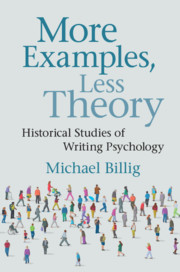4 - Freud
Writing to Reveal and to Conceal Himself
Published online by Cambridge University Press: 12 September 2019
Summary
Sigmund Freud was a great collector of psychological examples, whether from his own life or those of others. This chapter concentrates on one example taken from his self-analysis – his forgetting the name of the artist ‘Signorelli’. He wrote three slightly differing descriptions of the episode, the most famous being the first chapter of The Psychopathology of Everyday Life. By examining Freud’s different accounts of this example, and by comparing them with his interpretations of analogous cases involving his patients, we can see how Freud’s analysis of the Signorelli incident both reveals and conceals. He fails to make obvious connections, especially those that might relate to his relations with his sister-in-law. The very act of analysing the episode and then immediately publishing that analysis may well have been a means of repressing a memory. By re-interpreting the incident in this way, it becomes an example of the way that someone can repress, or push from their mind, a guilty secret.
- Type
- Chapter
- Information
- More Examples, Less TheoryHistorical Studies of Writing Psychology, pp. 79 - 112Publisher: Cambridge University PressPrint publication year: 2019

